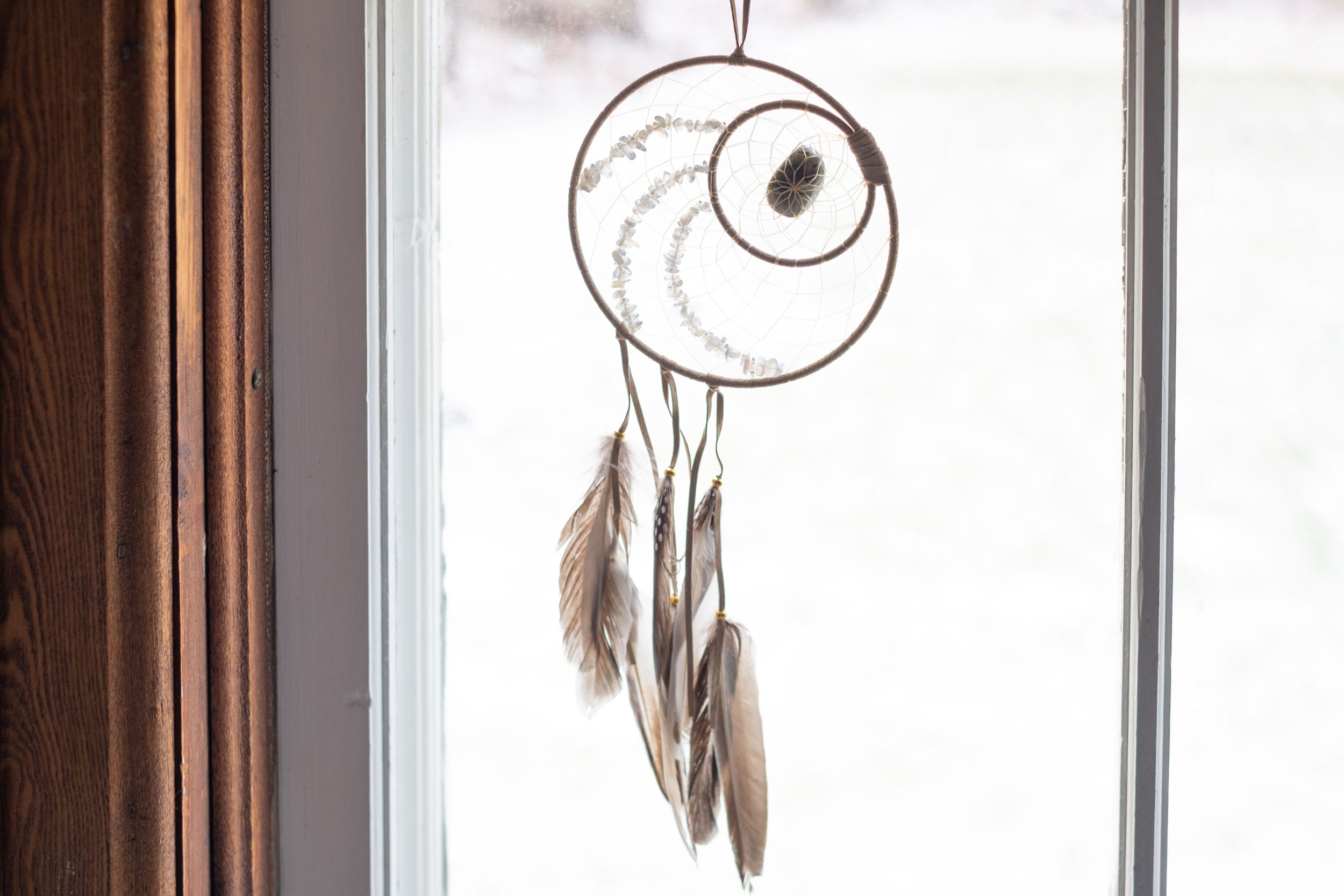Dreamcatchers have a spiritual genesis, originating with the Ojibwe peoples of North America. Initially used as charms of protection for children, dreamcatchers evolved to become talismans for parents and families as well. Ojibwe women were tasked with fashioning dreamcatchers out of willow branches, creating a hoop on which a web of sinew or string is woven, and adding sacred objects such as rocks or beads, and dangling feathers. Over time, dreamcatchers became a part of Lakota culture as well.

Hoop
The hoop symbolizes the circle of life. The hoop can be round, like a circle, or shaped like a teardrop.
Web
The webbing likens to a spider’s web. In some tribes, it is linked to the Ojibwe legend of the Asibikaashi (Spider-Woman), caretaker of children and people of the land. The web is meant to catch and trap bad dreams or evil spirits, preventing them from entering the mind during sleep. Once caught, they are believed to burn off in the daylight with the dawning of the sun. Interesting note: in Lakota legend, dreamcatchers are thought to capture good dreams!

A single bead or stone signifies the spider or spinner of the web. More than one may symbolize the bad dreams that have been trapped by the dreamcatcher.
Feathers
Beautiful dreams are believed to pass through the dreamcatcher where they are wafted by feathers into the dreamer’s mind.
Gems
Gems and semi-precious stones were thought to facilitate (or substitute) feathers in separating the good dreams from the bad. Different stones or crystals may have different meanings, according to tribe or legend.


Continue reading...

